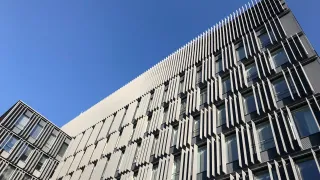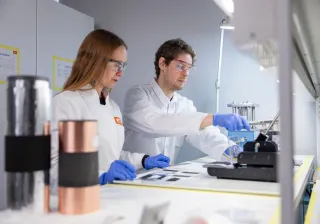VTT has decided not to pay compensations for its greenhouse gas emissions for now. Instead, we are focusing on reducing emissions, while investing in better energy efficiency.
“Our aim is to be carbon neutral by 2030”, says Jussi Manninen, Executive Vice President at VTT. He is responsible for sustainability matters on the VTT executive leadership team.
In October the executive leadership team decided that VTT would not start compensating for its greenhouse gas emissions. We feel that there is still great uncertainty related to the possibility to achieve emission reductions with compensations. “The most significant element in achieving the goal of carbon neutrality is to reduce our emissions of greenhouse gases”, Manninen emphasises.
“We have examined various compensation options and we have concluded that their use is not the best way to move ahead at present”, Manninen says, adding: “We believe that by investing in the energy efficiency of own activities we will still be able to achieve reasonably significant reductions in emissions.” For example, as a part of the upcoming winter's needs for energy conservation, VTT is reducing the temperature in its offices to 20.5 degrees.
Significant reduction already achieved in emissions from electricity consumption
The greenhouse gas emissions caused by VTT's activities in 2021 were slightly below 6,000 carbon dioxide equivalent tons. “The amount is significantly lower than in previous years, as we started buying renewable electricity with a certificate of origin at the beginning of 2021”, says Hanna Pihkola, Senior Scientist at VTT. In previous years electricity consumption has been overwhelmingly the greatest source of emissions from VTT operations.
VTT has plenty of facilities of different types for experimental research, such as laboratories and research halls where the actions need to be adapted to the special conditions required. We need to better understand our energy consumption as a whole, and how it is divided between our different activities. VTT operates in about 20 buildings in six locations around Finland. “VTT does not own the buildings, so activities are agreed together with the lessors. In 2023 we also aim to put more effort into the monitoring of energy consumption. In this way we will be able to target the reduction goals as wisely as possible”, Jussi Manninen says.
Electricity produced by solar panels is already being utilised in three buildings in Otaniemi (Espoo), and in Oulu. A decision has also been made to set up solar panels at the Jyväskylä premises.
Emissions must be reduced from all emission sources
In addition to the use of electricity, the greatest amount of emissions caused at VTT comes from purchased heat of the buildings and air travel. “In addition to renewable electricity, a significant contributor to the low emission figures in 2021 was that business related travelling was almost completely put on hold because of the pandemic. This year travel has resumed, and emissions are expected grow as a result”, Hanna Pihkola points out.
New ways still need to be found to control emissions related to travel. An additional goal for the coming years is to improve how emissions linked with Scope 3 are calculated, especially those involving procurements. Pihkola predicts that improving the coverage of the calculations will probably also lead to growth in annual emissions.
“A challenge for the future will be that for us to achieve significant reductions in emissions, we must take many kinds of actions simultaneously, and to try to change ways that we operate. On the practical level this means that each of us will have to think more than before about our own choices linked with business travel, for example”, Hanna Pihkola says.





